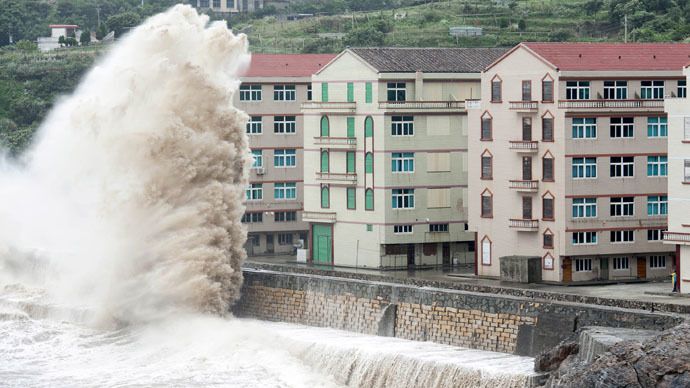
Typhoon Chan-hom hit the Chinese coast south of Shanghai on Saturday forcing about 1.1 million people to leave their homes and prompting airlines to cancel hundreds of flights.
Chan-hom first hit Zhejiang province on an island near the city of Ningbo at around 16:40 (08:40 GMT), the National Meteorological Center said.
The national weather service said that the typhoon might be the strongest to hit the region in over 60 years.

BYPASS THE CENSORS
Sign up to get unfiltered news delivered straight to your inbox.
You can unsubscribe any time. By subscribing you agree to our Terms of Use
The storm was initially deemed a super-typhoon but was downgraded at midday on Saturday to a strong typhoon.
RT reports:
Although China’s National Meteorological Center downgraded the storm from super typhoon to strong typhoon on Saturday, it still whipped up winds of up to 160 kilometers (100 miles) per hour, CCTV reported. Dumping over 100 millimeters (4 inches) of rain since late Friday, the storm made landfall in the city of Zhoushan in Zhejiang province.
According to weather.com, Chan-hom is on a weakening trend, but with its strong wind fields and current it could still generate a life-threatening storm surge along the East China Sea coast. The national weather service said earlier it could be the strongest typhoon in the densely populated coastal region since 1949, Xinhua reported.
No deaths or injuries had been reported by Saturday evening. But life came to a standstill in the region, with more than 600 flights having been canceled in the area, and almost 30,000 ships ordered back to port. Both land and water public transport suspended services.
Chan-hom is the ninth tropical storm that has formed in the Pacific Ocean this season. Before reaching China, it also moved over islands in southern Japan, as well as in the northern Philippines and Taiwan.


Be the first to comment